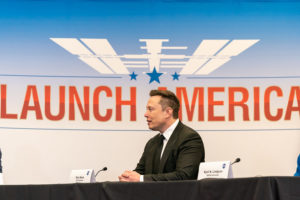
Tesla is now the world’s largest automaker as measured by market value. Investors value the company at $205 billion.
Tesla is projected to produce about 500,000 cars this year. Toyota Motor, now the second-largest automaker, produces close to 9 million cars annually. In other words, Toyota produces 18X more vehicles than Tesla, but the two companies have the same market value.
Why is Tesla worth so much when it produces so little?
Despite a global pandemic and a stock market crash in March, we are back to a “fairytales and fantasies” stock market. Tesla isn’t an auto company, it’s a software business say the bulls. Software business valuations apparently have no bounds. See Zoom Communications ($71 Billion value on $830 million in sales) for evidence.
That’s why Tesla is can trade at such a rich valuation: autonomous driving and robo-taxis and winner take all and massive market share and fat margins and $7,000 price targets.
It’s an exciting story, and it can’t be proven wrong until it is wrong.
Bloomberg has the details on Tesla’s new status.
Tesla Inc. displaced Toyota Motor Corp. as the world’s most valuable automaker, underscoring investor enthusiasm for a company trying to transform an industry that’s relied on internal combustion engines for more than 130 years.
Shares of Tesla, which have more than doubled since the start of the year, climbed as much as 3.5% in intraday trading Wednesday, giving it a market capitalization of $207.2 billion, surpassing Toyota’s $201.9 billion.
Chief Executive Officer Elon Musk has ignored or broken many of the established auto industry’s rules and norms in the 10 years since he took Tesla public, selling cars online and assembling vehicles in high-cost California. But while his company’s value has soared, there remains a gulf in the scale of his company and the world’s biggest car manufacturers.
Tesla produced 103,000 vehicles in the first quarter, or about 4% of the almost 2.4 million made by Toyota, which built its brand on affordability and reliability backed by innovations in large-scale manufacturing.
Read more here.



